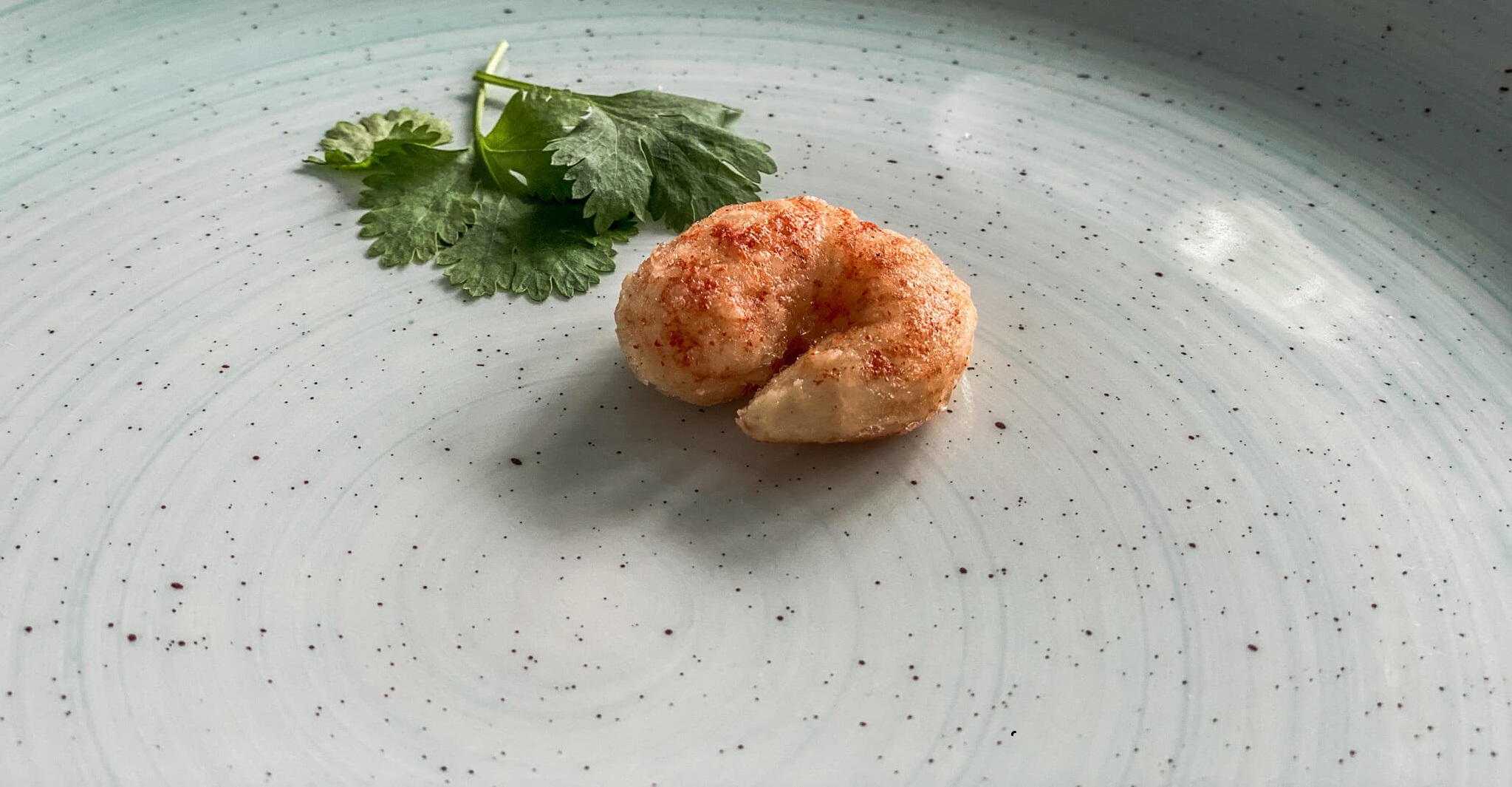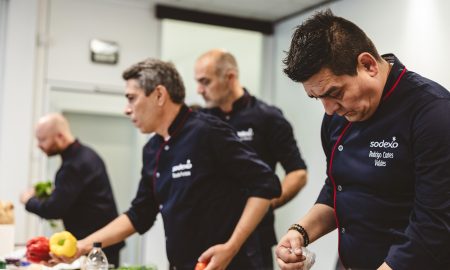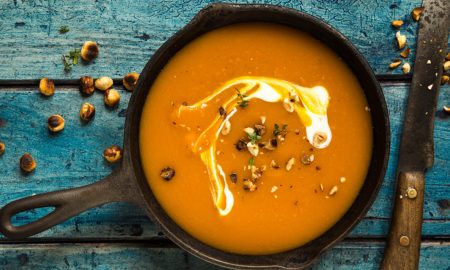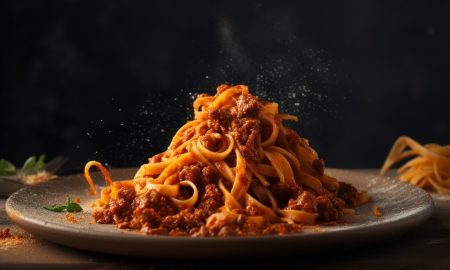That is, until the voice of Julian Hallet, together with Robin Drummond founder of Happy Ocean Foods, explains, “This may look like a shrimp, but it isn’t one. In reality, it’s plant-based substitute made from red and green algae, mung beans, soybeans, sea salt and agave syrup.” How is it possible to so effectively deceive the senses? Will this all change after the first bite, or will it taste just like you expect? This is what star chef Florian Hartmann, Daniel Klaus from KTCHNrebel and Sascha Barby from RATIONAL wanted to find out. So they started cooking like crazy. Vietnamese summer rolls, Japanese cucumber salad, melon feta salad, red Thai curry and ceviche were all on their vegan menu.
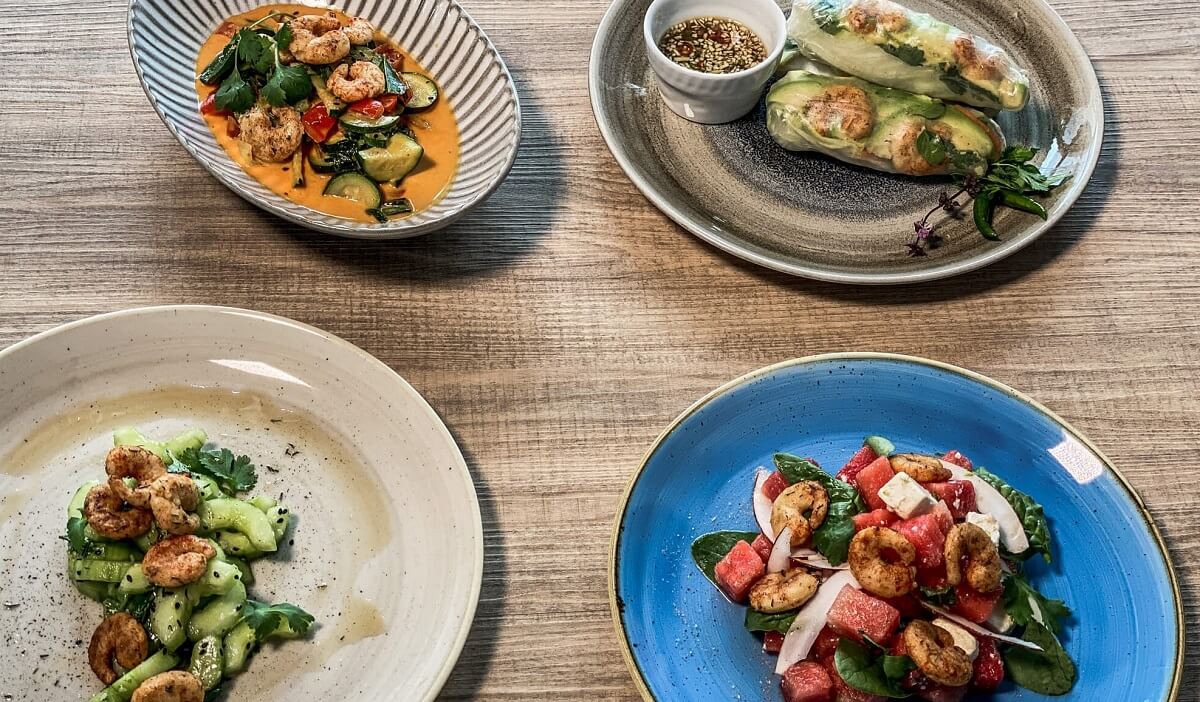
Image: Anke Sommer Rational
The verdict? According to Florian Hartmann, they were rewarded for their effort. Here’s his opinion in detail:
Size
The plant-based shrimp is very similar to the real deal. It weighs around 0.3 oz. and its size, shape and color remind you of boiled crayfish at first glance. This is his recommendation: If you make it a little bit bigger, it will also gain in value.
Raw consistency
When it comes to the vegan version, it makes no difference whether it is fried or raw.
Preparation
Happy Ocean shrimps can be prepared just like the real thing. They can be fried, cooked, or even served raw. The manufacturer’s recommendation is to fry them.
Taste
All three testers were amazed by the way the plant-based shrimp combine with other ingredients. It can absolutely hold its own against the real thing. Its bite was just right as was the consistency on the tongue, and it has a faint flavor of the sea.
Use
The plant-based version can be used in the same way as the animal product. This includes as decoration, in salads and curries, etc. In this case, the imagination truly knows no bounds.

The Happy Ocean Foods founders in action / Image: Anke Sommer
Conclusion
Hartmann was particularly into working with the raw product. The guys from Happy Ocean Foods had not done this before, but Hartmann would not be a star chef if he didn’t try out different things on a regular basis. It was definitely worth it. Classic ceviche is prepared with raw fish, but the same result was achieved with the fish substitute. Florian Hartmann’s conclusion: “Vegan shrimp can definitely replace the genuine one from the sea. What I particularly liked is that this proves yet again that we can also contribute to sustainability when selecting our ingredients.”
Speaking of sustainability
Happy Ocean Foods set out to prove that delicious and sustainable food is not mutually exclusive, which is why they decide to create vegan shrimp. According to Happy Oceans Foods, this is because wild caught shrimp are increasingly contaminated with microplastics, have dolphins and seals among other animals as by-catch and are 33 percent overfished. However, aquaculture breeding does not seem to be a viable alternative: Mangrove deforestation, miserable conditions for the animals and the massive use of antibiotics are only a few of the side effects. Happy Oceans shrimp, on the other hand, is produced sustainably, without harmful substances or artificial additives and prevents overfishing.
On to marketability
The substitute products had to undergo numerous tests until they reached the consistency and taste they have today and could call themselves vegan shrimp. Hallet and Drummond still think that some things could be improved. However, you could already sample the plant-based shrimps until the end of September, exclusively at the Munich restaurant Max Pett. The supply was limited; after all, each and every shrimp is still made by hand. It is a start-up, after all. Bigger distribution is envisioned for the near future, and distribution partners are already being sought over the website. Initially they will only focus on supplying restaurants, so you’ll have to wait a while longer before you find the plant-based shrimp for sale at supermarkets. The next products are also already in the innovation pipeline, such as lobster, crab meat – Hallet and Drummond still have big plans ahead.


